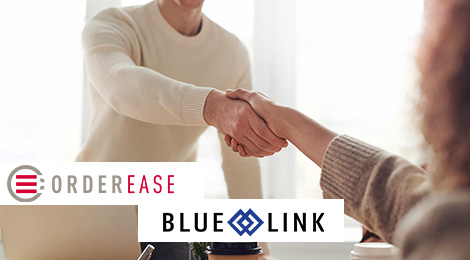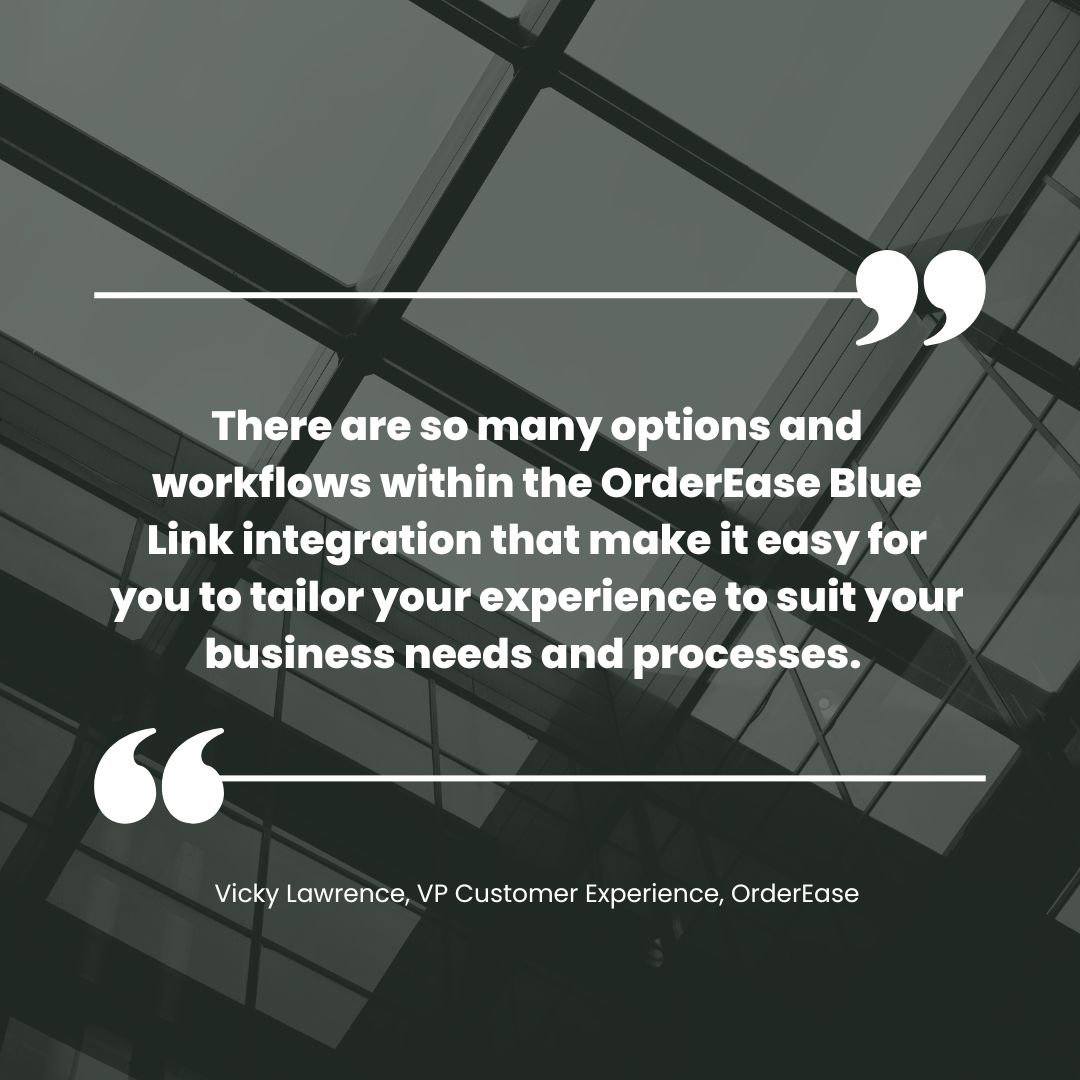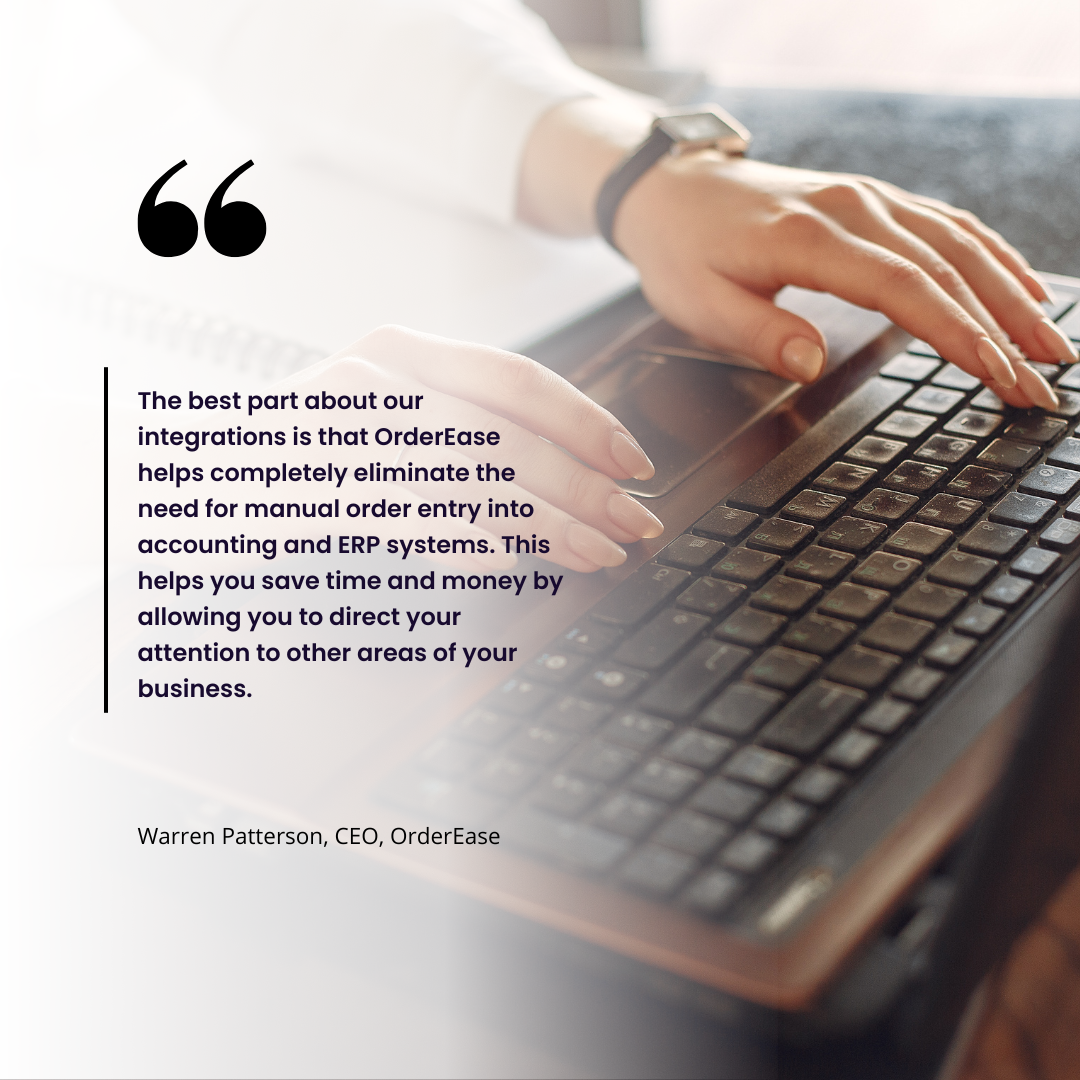A conversation with Vicky Lawrence, VP Customer Experience, OrderEase
Thanks to advances in technology, integration between software systems are easier than ever, and yet, so many SMBs are still not taking full advantage of everything that integration has to offer. Even if you’re using an all-in-one inventory management and accounting ERP system such as Blue Link to manage your business operations, there are still opportunities for integration when it comes to selling through multiple sales channels – such as EDI, eCommerce, retail and tradeshows. This is where a great integration partner comes into play. Someone with the experience to offer seamless integration between your back-end systems and different sales channels. To discuss some tips on how to find the right integration partner, we spoke with Vicky Lawrence, VP Customer Experience, from OrderEase. OrderEase is a Blue Link certified partner, providing integration capabilities for a variety of sales channels, plus proprietary tools for sales reps and document parsing capabilities. As a complete B2B wholesale ordering solution for wholesalers, retailers and buying groups, OrderEase helps Blue Link customers capture orders from any channel, essentially eliminating the need for manual data entry.
Continue reading to learn more about OrderEase and how to find the right integration partner.
What is the biggest reason why companies are hesitant to start the integration process?
As with any software search, getting started can sometimes be the hardest part. According to Vicky, one of the reasons that companies are hesitant to start the integration process is because “they don’t think they are technical enough to support an integration and they believe the costs will be too high.” However, this is where the role of an integration partner becomes crucial. Working with a company like OrderEase means you have a knowledgeable team to help guide you through the entire process side-by-side. And, while the costs might seem high, when you start to compare them with the benefits of integration, you will soon realize how high the ROI can be. “Some people have previously had a bad experience where an integration or installation of software was to happen and it either didn't fully execute or there were extensive delays. Other times people think software salespeople will say anything just to get the sale, they over promise on the functionality of the software”, says Vicky Lawrence, OrderEase. While these concerns are a risk with any software implementation, there are ways to avoid these issues from the beginning, such as:
- Be wary of salespeople or businesses that try to rush the sales process instead of spending the time getting to know you and your business to assess fit and opportunity.
- Start small by focusing on areas of high impact, and low risk with integration and then you can begin to tackle larger projects.
- Take the time to fully analyze your existing processes and where you can gain benefits from integration. For example, will you be able to cut down on order entry staff and have them focus on more meaningful work? Will you be able to process and ship more orders per day? Will you be able to reduce the number of shipping errors?
What is the most common barrier for clients when it comes to getting integration set up?
According to Vicky, when it comes time to get the integration set up, many businesses are stuck “because of the quality of existing data and the resources available to clean up data in their existing systems to prepare for the integration”. While this issue can initially seem like a large barrier, spending the time, in the beginning, to clean up the data will save you time and headaches down the road and open the door to even more opportunities for integration. It’s never a bad idea to have clean data in your systems.
What would you recommend to customers who decide to start integrating their different sales channels?
Start with quick wins! There is no need to start with the most complicated integration first, but instead start with some quick wins by determining where the biggest impact on your business and workflows will be. Then, once those integrations are set up, it frees up resources to start working on the more complicated integrations. “Once integrated with the ERP, adding sales channels is relatively quick and easy. However, it's best to do methodically to ensure each channel is flowing data properly before adding the next channel.”, says Vicky. Once you start with the simple integrations and quick wins, you will soon realize there are so many more possibilities for further integrations.
What comments do you commonly get from customers after they have integrated their different sales channels?
Customers are often surprised to learn about the full range of benefits that can be achieved through software integration. Integrating different sales channels to your ERP can greatly streamline your business's operations, and result in increased efficiencies and productivity, and fewer data entry errors and duplications. It can also lead to cost savings by reducing the need for manual processes, hiring additional people during your busy season and freeing up resources for other important tasks. Overall, customers are often pleasantly surprised to learn about the many benefits they can achieve through integration and shocked that they were ever able to keep up with orders before. Then, of course, the next question is always, “what can we do next?”
What do you see as the biggest benefit to integration?
As we’ve already touched upon, there are so many benefits to integrating your sales channels into your ERP:
- Reduce/eliminate the amount of manual data entry
- Reduce the number of dedicated order entry staff (especially during your busy season)
- Remove order errors and duplication of data
- Up-to-date information across your sales channels and systems (pricing, inventory, order status)
- The ability to support endless aisles with direct consumer fulfilment
But, with OrderEase specifically, one of the biggest benefits is that it’s a single integration into your ERP system, which makes it easy to quickly connect and bridge the data between multiple customers and vendors. Also, because OrderEase is a 2-way solution, it allows data from the ERP to push into the sales channel which is a great tool for Blue Link customers (think inventory, order status, pricing, etc.). You have the ability for API connectivity, EDI trading, and a customer ordering portal. In addition, OrderEase provides customers access to a sales rep app, and even the ability to receive and digitize PDF orders received from customers.
 |
Vicky Lawrence, VP Customer Experience, OrderEase
Vicky's diverse background includes project management, sales, training and digital marketing in a variety of industries including pharmaceutical, brand manufacturers of industrial equipment, distributors, and SaaS companies. Each role over the past 25 years has contributed to Vicky's success at building teams, processes, change management and training programs used to scale businesses.
|












